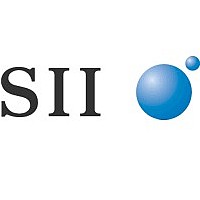S-8242B Seiko Instruments, S-8242B Datasheet - Page 10

S-8242B
Manufacturer Part Number
S-8242B
Description
BATTERY PROTECTION IC
Manufacturer
Seiko Instruments
Datasheet
1.S-8242B.pdf
(30 pages)
Available stocks
Company
Part Number
Manufacturer
Quantity
Price
Company:
Part Number:
S-8242BAN-I8T1G
Manufacturer:
SEIKO
Quantity:
15 600
Company:
Part Number:
S-8242BAP-T8T1G
Manufacturer:
DAEWOO
Quantity:
77
Part Number:
S-8242BAP-T8T1G
Manufacturer:
SEIKO
Quantity:
20 000
Company:
Part Number:
S-8242BAT-18T1G
Manufacturer:
SEIKO
Quantity:
5 600
Part Number:
S-8242BAT-18T1G
Manufacturer:
SII/精工
Quantity:
20 000
Part Number:
S-8242BBC-I8T1G
Manufacturer:
SEIKO/精工
Quantity:
20 000
Company:
Part Number:
S-8242BBG-T8T1G
Manufacturer:
SEIKO
Quantity:
12 000
www.DataSheet4U.com
10
BATTERY PROTECTION IC FOR 2-SERIAL-CELL PACK
S-8242B Series
Remark Refer to “
1. Normal Status
2. Overcharge Status
Operation
This IC monitors the voltage of the battery connected between the VDD and VSS pins and the voltage difference
between the VM and VSS pins to control charging and discharging. When the battery voltage is in the range from
overdischarge detection voltage n (V
range from the charger detection voltage (V
charging and discharging control FETs on. This condition is called the normal status, and in this condition charging
and discharging can be carried out freely.
Caution When the battery is connected for the first time, discharging may not be enabled. In this case,
When the battery voltage becomes higher than overcharge detection voltage n (V
status and detection continues for the overcharge detection delay time (t
charging control FET off to stop charging. This condition is called the overcharge status.
The overcharge status is released in the following two cases ((1) and (2)).
(1) When the battery voltage falls below overcharge release voltage n (V
(2) When a load is connected and discharging starts, the S-8242B Series turns the charging control FET on and
Caution 1. If the battery is charged to a voltage higher than overcharge detection voltage n (V
control FET on and returns to the normal status.
returns to the normal status. Just after the load is connected and discharging starts, the discharging current
flows through the parasitic diode in the charging control FET. At this moment the VM pin potential becomes V
the voltage for the parasitic diode, higher than the V
detection voltage n (V
the S-8242B Series releases the overcharge condition.
2. When a charger is connected after overcharge detection, the overcharge status is not released
short the VM pin and VSS pin or connect the charger to restore the normal status.
battery voltage does not fall below overcharge detection voltage n (V
load is connected, overcurrent 1 and overcurrent 2 do not function until the battery voltage falls
below overcharge detection voltage n (V
of tens of mΩ, the battery voltage drops immediately after a heavy load that causes overcurrent
is connected, and overcurrent 1 and overcurrent 2 function.
even if the battery voltage is below overcharge release voltage n (V
is released when the VM pin voltage goes over the charger detection voltage (V
the charger.
Battery Protection IC Connection Example ”.
CUn
) and provided that the VM pin voltage is higher than overcurrent detection voltage 1,
DLn
) to overcharge detection voltage n (V
Seiko Instruments Inc.
CHA
) to overcurrent detection voltage 1 (V
CUn
SS
). Since an actual battery has an internal impedance
level. When the battery voltage goes under overcharge
CU
CLn
) or longer, the S-8242B Series turns the
), the S-8242B Series turns the charging
CUn
), and the VM pin voltage is in the
CUn
) during charging in the normal
CLn
IOV1
). The overcharge status
CUn
), the IC turns both the
) even when a heavy
CHA
Rev.1.4
) by removing
CUn
) and the
_00
f
,













